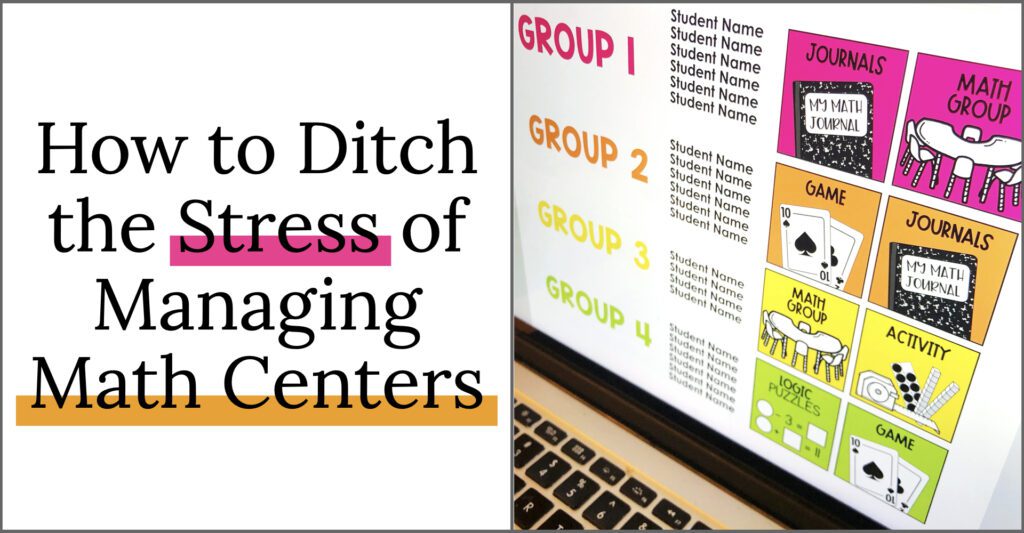
When I taught whole group, or had every student rotate through the same centers each week, I was barely keeping my head above water. I was ALWAYS putting out fires while a line of students followed me around the classroom asking for help. Sound familiar?
However, the idea of managing math centers and small groups STRESSED ME OUT! Initially I was overwhelmed by the idea too. Having to manage so many things at once, and keep track of so many moving pieces seemed chaotic. However, when I finally took the plunge, I realized pretty quickly that it was A LOT easier than I had played it up to be in my mind.
I’ve found there are a few key ingredients to running your guided math groups and centers smoothly! Let’s take a look at each of them:
Let the Students Take Charge
I have to admit, I’m starting with the one that was the hardest for me. My need for control prevented me from trying a lot of things in my classroom, including using the Guided Math model. I clung to control because I was worried that not having it meant my classroom would fall into chaos.
I had a math specialist who PUSHED me (it was NOT a gentle nudge) to implement choice into my math centers. I was very resistant, but she was brilliant, and I knew she would only be pushing me if she REALLY thought it would make a difference. Oh my goodness, she was SO RIGHT!
Implementing choice meant that my students were learning a variety of ways to practice and build their mathematical knowledge, and then offer a “forced choice”. This means that I offer two or three activities and the student chooses the one they wish to focus on during that center. It could be that they choose from 3 different journal prompts, or from two different games. The idea is that I still have control over the choices offered, but they are getting SOME say in the work they engage in.
Was EVERY aspect of their math block a choice? No, there was definitely a healthy mix. However, when I implemented choice into different parts of their math block, and let my students take charge of their learning, I saw a BIG shift. The independence empowered them! They were engaged, and highly motivated to learn.
I was afraid of offering choice because it would be too much to keep track of and my classroom management would fall apart. However, the opposite ended up being true. My students were highly engaged, and I noticed a significant decrease in behaviors and students being off task. My classroom management game only grew stronger when I started offering choice during my math block.
Meeting Students Where They Are Builds Confidence and Independence
I love the Guided Math model because I get to meet students right where they are. It’s just like Guided Reading, where you choose “just right books” to introduce ideas and literacy skills that match your student’s current understanding. In Guided Math, you are choosing “just right activities” to introduce ideas and math skills that match your student’s current mathematical understanding.
When I am meeting my students right where they are during our small group lessons, and then I send them off to practice those ideas and skills in targeted centers, I am building their confidence. Each time we meet, I introduce a new concept that is just one step ahead of where they are, instead of twenty steps ahead or ten steps behind. They are highly engaged in their learning, and EXCITED to come to group!
The same can be said for their math centers. When they are rotating through activities that mirror the targeted work from our small groups, students feel confident and work independently. When my students can be independent and are highly engaged, I don’t have to worry about managing behaviors and I can actually TEACH!
Strong Center Routines Help Kids Thrive
Small group, Guided Math instruction is built upon a foundation of solid and consistent routines. We all know this is how kids THRIVE. By having the same daily structure to my math block (math talk, small groups/center rotations, closing circle) my students always knew what to expect when it was time for math. This immediately removed a lot of anxiety that students feel around learning.
Within the time structure, there are embedded routines as well. Students look for direction from a consistent work board, where they rotate through the same 5-8 centers, but the content within that center changes (e.g. math journals). Having these consistent centers means I am not wasting time explaining all of the new centers and center rotation cards, or answering the questions when students don’t know where to go. Instead, I’m teaching my small math groups, and my students are finding their way to their next rotation independently.
Having strong routines around organizing your materials is KEY! Ensuring that everything is accessible to students, everything has a place, and everything is clearly labeled are CRITICAL pieces of math center management. Taking the time to model how to locate supplies, take them out, and put them away will pay dividends over the course of the school year!


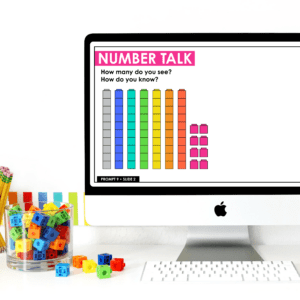
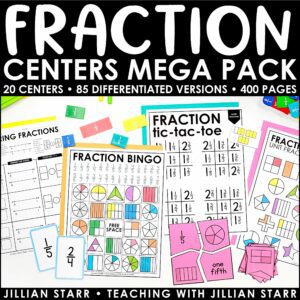
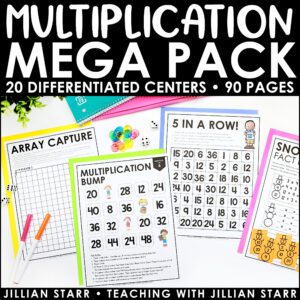
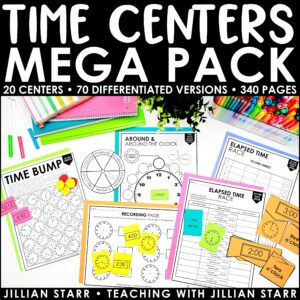
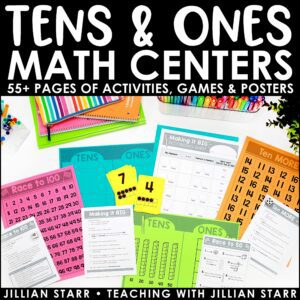
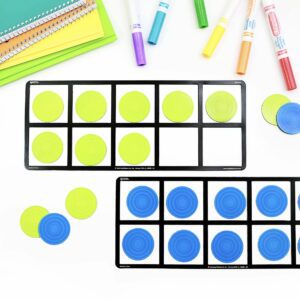
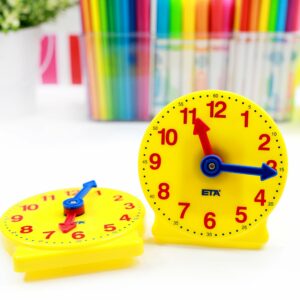



We are implementing math centers in K this year. I am a bit apprehensive. I am excited to meet in small group to support kids where they are but I am u sure about the rest. We have to launch whole group then they go.
How long did you run each group?
Hi Samie! I’m actually going to give a free training about how to structure your math block and how much time to give each group. I hope you’ll be able to check it out!
How do you get the post-it notes to copy without getting stuck in the copier?
I don’t use the copy machine 🙂 I use a printer and never have them get stuck!